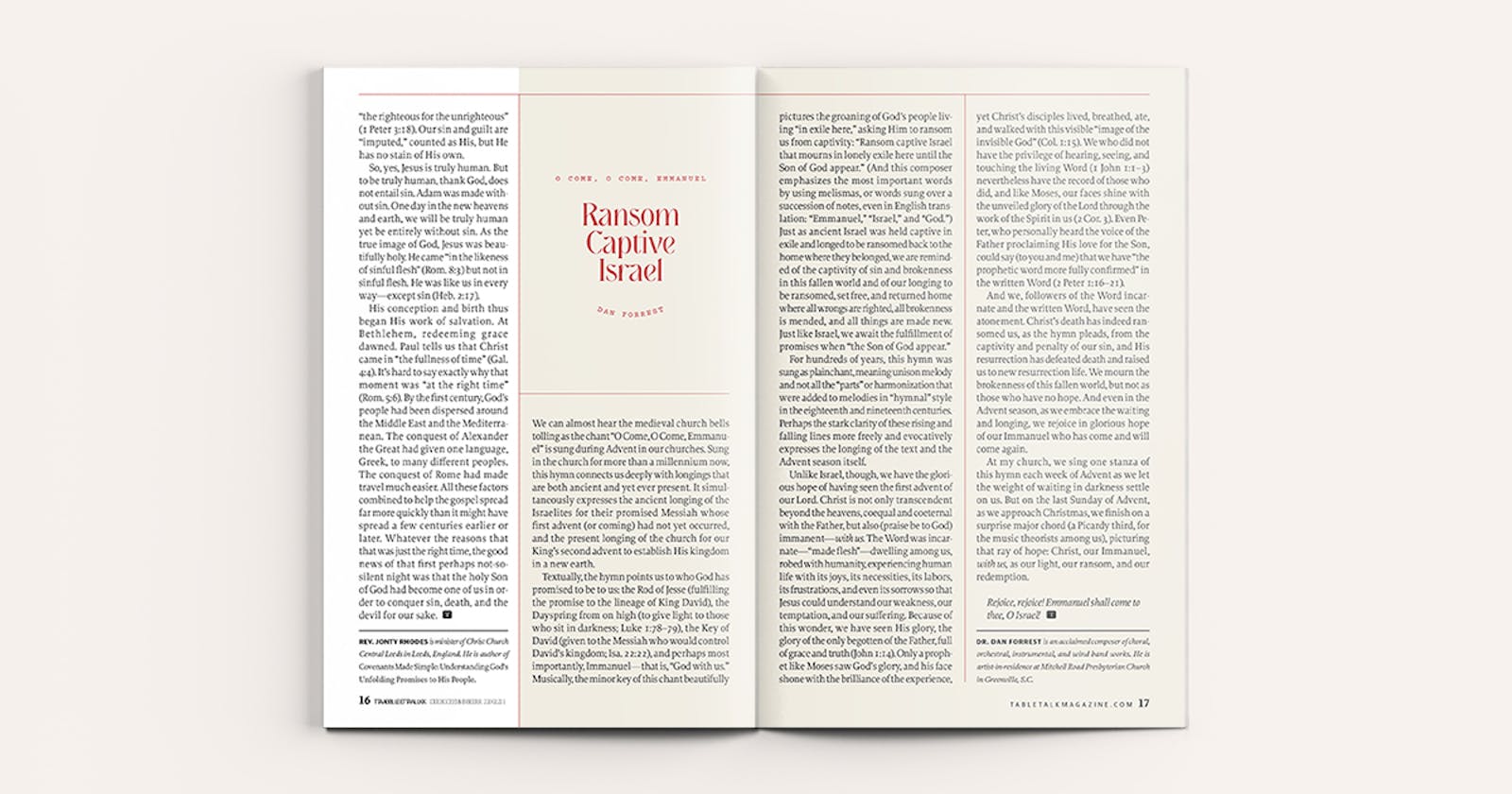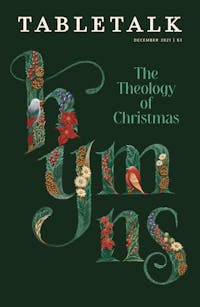
Request your free, three-month trial to Tabletalk magazine. You’ll receive the print issue monthly and gain immediate digital access to decades of archives. This trial is risk-free. No credit card required.
Try Tabletalk NowAlready receive Tabletalk magazine every month?
Verify your email address to gain unlimited access.
We can almost hear the medieval church bells tolling as the chant “O Come, O Come, Emmanuel” is sung during Advent in our churches. Sung in the church for more than a millennium now, this hymn connects us deeply with longings that are both ancient and yet ever present. It simultaneously expresses the ancient longing of the Israelites for their promised Messiah whose first advent (or coming) had not yet occurred, and the present longing of the church for our King’s second advent to establish His kingdom in a new earth.
Textually, the hymn points us to who God has promised to be to us: the Rod of Jesse (fulfilling the promise to the lineage of King David), the Dayspring from on high (to give light to those who sit in darkness; Luke 1:78–79), the Key of David (given to the Messiah who would control David’s kingdom; Isa. 22:22), and perhaps most importantly, Immanuel—that is, “God with us.” Musically, the minor key of this chant beautifully pictures the groaning of God’s people living “in exile here,” asking Him to ransom us from captivity: “Ransom captive Israel that mourns in lonely exile here until the Son of God appear.” (And this composer emphasizes the most important words by using melismas, or words sung over a succession of notes, even in English translation: “Emmanuel,” “Israel,” and “God.”) Just as ancient Israel was held captive in exile and longed to be ransomed back to the home where they belonged, we are reminded of the captivity of sin and brokenness in this fallen world and of our longing to be ransomed, set free, and returned home where all wrongs are righted, all brokenness is mended, and all things are made new. Just like Israel, we await the fulfillment of promises when “the Son of God appear.”

For hundreds of years, this hymn was sung as plainchant, meaning unison melody and not all the “parts” or harmonization that were added to melodies in “hymnal” style in the eighteenth and nineteenth centuries. Perhaps the stark clarity of these rising and falling lines more freely and evocatively expresses the longing of the text and the Advent season itself.
Unlike Israel, though, we have the glorious hope of having seen the first advent of our Lord. Christ is not only transcendent beyond the heavens, coequal and coeternal with the Father, but also (praise be to God) immanent—with us. The Word was incarnate—“made flesh”—dwelling among us, robed with humanity, experiencing human life with its joys, its necessities, its labors, its frustrations, and even its sorrows so that Jesus could understand our weakness, our temptation, and our suffering. Because of this wonder, we have seen His glory, the glory of the only begotten of the Father, full of grace and truth (John 1:14). Only a prophet like Moses saw God’s glory, and his face shone with the brilliance of the experience, yet Christ’s disciples lived, breathed, ate, and walked with this visible “image of the invisible God” (Col. 1:15). We who did not have the privilege of hearing, seeing, and touching the living Word (1 John 1:1–3) nevertheless have the record of those who did, and like Moses, our faces shine with the unveiled glory of the Lord through the work of the Spirit in us (2 Cor. 3). Even Peter, who personally heard the voice of the Father proclaiming His love for the Son, could say (to you and me) that we have “the prophetic word more fully confirmed” in the written Word (2 Peter 1:16–21).
And we, followers of the Word incarnate and the written Word, have seen the atonement. Christ’s death has indeed ransomed us, as the hymn pleads, from the captivity and penalty of our sin, and His resurrection has defeated death and raised us to new resurrection life. We mourn the brokenness of this fallen world, but not as those who have no hope. And even in the Advent season, as we embrace the waiting and longing, we rejoice in glorious hope of our Immanuel who has come and will come again.
At my church, we sing one stanza of this hymn each week of Advent as we let the weight of waiting in darkness settle on us. But on the last Sunday of Advent, as we approach Christmas, we finish on a surprise major chord (a Picardy third, for the music theorists among us), picturing that ray of hope: Christ, our Immanuel, with us, as our light, our ransom, and our redemption.
Rejoice, rejoice! Emmanuel shall come to thee, O Israel!
